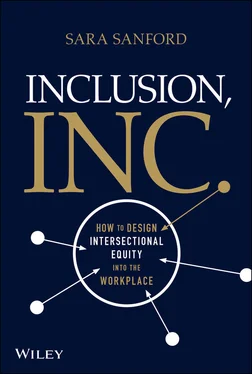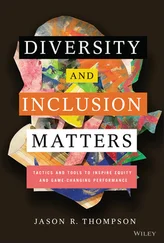These individual companies and leaders are not anomalies. While some strides have been made toward workplace equality over the last 50 years, over the last two decades progress has stalled. Looking beyond the wage gap, women and minorities are still underrepresented in leadership, 1 receive less access to senior leaders, 2 and are leaving the fastest-growing sectors, such as tech, at higher rates than white men, 3 citing “culture” as the primary reason. Women—especially women of color—are more likely to have been laid off during the COVID-19 crisis, 4 and experts estimate that decades of progress toward workplace equality have been erased by the pandemic. 5
Despite the rise of MeToo and Black Lives Matter, many workplaces have taken a step backward: Men are less likely now to want to mentor women than they were before the MeToo movement. 6 Managers are less likely to advocate for employees of color than they are for white employees, 7 and employees are more receptive to constructive criticism from a male manager than from a female manager. 8
In short, we're still stuck.
Despite this sobering snapshot of the status quo, when it comes to equity and inclusion, there is good news:
We've been doing it all wrong.
I was asked during a recent interview to pick one word to describe how business leaders feel about DEI. I think they were looking for “committed” or “optimistic.”
I chose “overwhelmed.”
This feeling isn't limited to business leaders. I spend my days listening to employees across all levels of organizations talk about what diversity and inclusion mean to them. In these conversations, I hear a lot of recurring themes:
White employees want to support their peers of color but don't know where to start.
Employees of color are told over and over again, “We need to hear voices like yours. We need more people of color to speak up.” Then, they do speak up and they hear, “You're making your peers uncomfortable. You should just focus on leading your team. You're pulling the race card.” Some find, after speaking up, that they're suddenly left out of meetings and important projects.
Men want to be allies, but they're worried they're going to say the wrong thing.
Women take advice to “Lean In” and stand up for themselves or negotiate for a raise, only to be told they're too aggressive or arrogant. Other women see these consequences and avoid speaking up, and then are told it's their own fault that their careers aren't progressing.
Managers and executives start to explore DEI strategies and become paralyzed by an ever-changing DEI vocabulary, contradictory messages, and seemingly endless nuance. If they do implement new inclusive policies, they find a new segment of their employee base is angry at them.
Employees who feel their neurodivergent status, age, or caretaking responsibilities impact how they're treated at work aren't sure they have a “right” to speak up, because what they're experiencing doesn't seem as bad as overt racism or sexism.
This is just the beginning. Whatever the particular mix of overwhelm looks like in each organization, I see the same repeated outcomes: Underestimated employees eventually realize their only choices are to assimilate or leave, and the businesses and employees both miss out. (Arlan Hamilton coined the term “underestimated” to refer to groups that have historically experienced bias.) Even if businesses manage to hold on to these employees, employers won't get the benefits of their unique insights, since they will never feel comfortable showing up authentically.
Employees who do choose to leave find they don't know how to determine if another employer will be better. Many “Most Inclusive Workplaces” lists are sponsored, or their criteria are unclear or unsubstantiated. Large organizations that appear more diverse than others don't show their attrition numbers. They may just be in a continuous cycle of losing and rehiring employees to keep their diversity numbers up. Alternatively, they may have diverse overall numbers, but zooming in could reveal that none of that diversity shows up in leadership.
Employees don't know where to look. Employers don't know what to do. In general, there's a lack of clarity about what works—what behaviors, processes, and practices should be tracked to catalyze progress toward equity at work.
I wrote Inclusion, Inc to provide this clarity.
To get out from under the overwhelm, we have to start by understanding the status quo. What have businesses been doing to address DEI, and why isn't it working?
American businesses spend $8 billion a year on diversity trainings. 9
The quintessential diversity training came out of a 1960s workplace focused on compliance. Title VII of the Civil Rights Act of 1964 had made it illegal for employers to discriminate on the basis of race, religion, sex, or national origin, and a barrage of discrimination suits quickly followed. One of the most common remedies was a court-ordered mandate for the organization to train all employees in anti-discriminatory behavior. Many companies wanted to avoid costly and embarrassing lawsuits and preemptively implemented trainings, collecting signatures from employees afterward, acknowledging that employees understood the consequences of noncompliance.
Over decades, trainings expanded to accommodate LGBTQ employees, as well as other groups, and many workplaces now prefer to call them “unconscious bias” trainings. Even as they've evolved, one aspect of trainings hasn't changed: their ineffectiveness.
Morgan Stanley had trainings, before they shelled out $100 million to settle high-profile sex discrimination lawsuits. Bank of America's trainings didn't keep them from paying $160 million in racial discrimination settlements. Uber had trainings before paying millions to settle a class action suit brought by 420 female and minority engineers alleging gender and racial discrimination. These totals don't take into account the enduring costs of tarnished brands.
Multiple studies published in the Harvard Business Review conclude that diversity trainings don't work and often backfire. These studies found that white men who were asked to attend diversity trainings were actually less likely to hire and promote women and minorities. 10 In general, participants who attend trainings in which they're told that we all hold biases leave those trainings believing that they are the exception, and their actions become more rooted in bias, not less. 11
One of the reasons that biases are so insidious is that learning about them doesn't actually rid us of them. While becoming more aware of them can increase our ability to identify bias in others, it does not increase our ability to recognize it in ourselves. In fact, the stronger our biases are, the worse we are at seeing them, and the more neutral we believe we are. When this phenomenon is scaled, the more meritocratic we believe we are as an organization, the more biased our systems may be.
Chapter 3describes in greater depth why trainings and other common approaches to DEI, such as affinity groups and the Lean In prescription, fall short. It also introduces new perspectives that can give businesses a competitive DEI advantage. For now, a quick preview: The difference between businesses that break the DEI inertia and those who stay stuck is defined by one key perspective shift: Equity isn't personal . It's systemic.
A Perspective Shift: From Changing Mindsets to Changing Mechanics
In a 1972 interview with Playboy magazine, the visionary architect, inventor, and philosopher Buckminster Fuller introduced the timeless wisdom of the trim tab—a small mechanism that helps stabilize an enormous ship or aircraft—which would become a central metaphor in his philosophy:
Читать дальше












